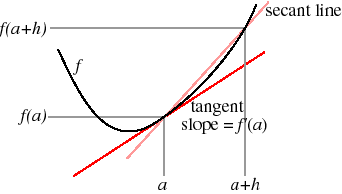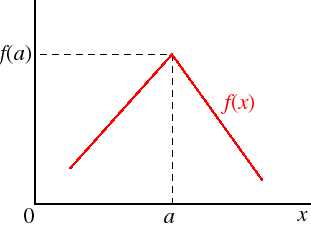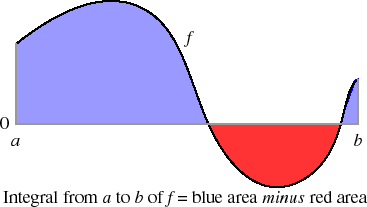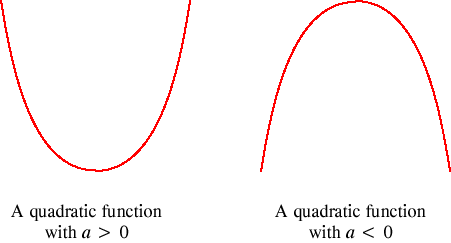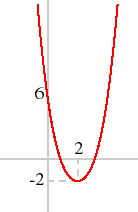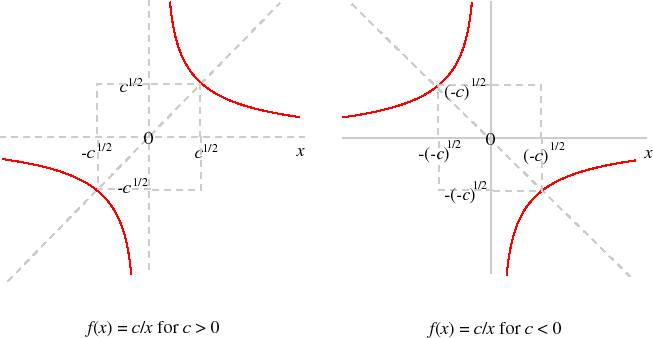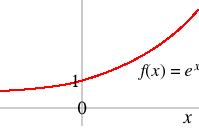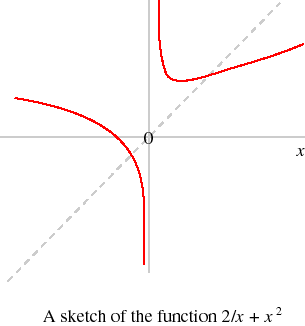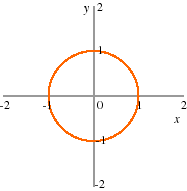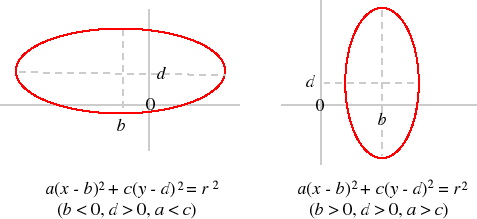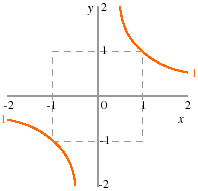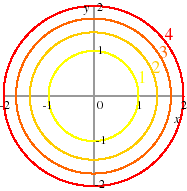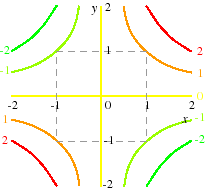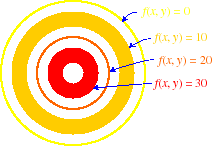Page 1 of 26
Series 01
Delhi School of Economics
Department of Economics
Entrance Examination for MA Economics, June 27 2009
Option A Series 01
Time 3 Hours Maximum Marks 100
General Instructions: Please read carefully
Do not break the seal on this booklet until instructed to do so by the
invigilator. Any one breaking the seal prematurely will be evicted from the
examination hall and his/her candidature will be cancelled.
Immediately after you receive this booklet, fill in your name and roll no in the
designated space below.
Check that you have a bubble sheet (Optical Mark Sheet) accompanying this
booklet. All questions are to be marked on the optical mark sheet only, and the
entire examination will be checked by a machine. Therefore it is very
important that you follow the instructions on the bubble-sheet.
Following the instructions on the bubble sheet, fill in the required
information in boxes 1, 2, 4, 5 and 6 in the bubble-sheet. The invigilator
will sign in box 3.
o In box 4 , enter your roll number a 4 digit number, e.g. 0123.
o In box 5, enter the category under which you wish to be considered,
viz SC (Scheduled Caste), ST (Scheduled Tribe), OBC (Other
backward Caste), PH(Physically Handicapped), AF(Dependent of
Armed Forces Personnel killed or disabled in action), SPORTS, or
GEN (General Category)
o In Box 6 enter 01 as your series number.
Keep your admission ticket easily accessible for verification by the
invigilators
For rough work (calculations, drawings, etc.), use only the blank pages at the
end of this booklet.
When you finish, hand in this booklet and the bubble sheet to the invigilator.
Do not disturb or talk to your neighbours at any time. Any one indulging in
illegal examination practices will be immediately evicted from the
examination hall and that person’s candidature will be cancelled.
Only after the invigilators announce the start of the examination, break the
seal on this booklet and follow the instructions on page 2.
Full Name: ___________________________________________________
Roll Number _____________________________________________________ Page 2 of 26
Series 01
There are two Parts to the exam, Attempt both parts.
Part 1: One Mark Questions
Instructions:
• First check that this booklet has pages numbered 1 through 26. Also check
that the bottom of each page is marked Series 01. Bring any missing pages
to the attention of the invigilator.
• This part of the examination has 20 multiple choice questions. Each
question is followed by four possible choices, one of which is correct.
Indicate the correct choice on the bubble sheet, NOT on this booklet.
• Each correct choice will earn you 1 mark. However you will lose 1/3 mark
for each incorrect choice. If you shade none of the bubbles, or more than
one bubble, you will get 0 for that question.
• You may begin now, Good Luck
1. There are 4 married couples in a club. A 3-member committee must be formed
from among them, such that no married couple is part of the committee. The number
of ways in which this committee can be formed is
a) 16
b) 44
c) 32
d) 56
2. For any sets E & F, E – F = { x ∈ E | }, x ∉ F ∪ and ∩ refer to the Union and
intersection of the sets. Consider the following statements for the sets A, B and C
i. A − (B ∪C) = (A − B) ∪ (A − C)
ii. A − (B ∪C) = (A − B) ∩ (A − C)
iii. A − (B ∪C) = (A − B) ∩ C
a) i. is true
b) ii. is true
c) iii. is true
d) none of them is necessarily true.
3. ∫
∞
−
96.1
2/
2
x
e dx is approximately
a) 0.025
b) 2 π
c) .0 025/ π
d) 0.025 2 πPage 3 of 26
Series 01
4. Consider maximizing 2 2
f (x, y) = x − y subject to the constraint 1 x + y = , where x
and y are real numbers. This problem has
a) no solution.
b) a unique solution.
c) 2 solutions.
d) an infinity of solutions.
5. Suppose P(x) and Q(x) are real polynomials of degree m and k respectively, where
both m and k are less than or equal to the positive integer n. Suppose the equation P(x)
= Q(x) has at least (n + 1) distinct solutions. Which of the following choices best
describes what this situation implies?
a) m = k = n
b) m = k < n
c) P(x) and Q(x) are identical.
d) P(x) and Q(x) are linear
6. There are three alternative definitions of a consistent estimator
I. An estimator is consistent if its probability limit equals its true parameter
value as sample size approaches infinity.
II. An estimator is consistent if its mean squared error goes to zero as sample
size approaches infinity.
III. An estimator is consistent if it is unbiased, and its variance goes to zero as
sample size approaches infinity.
Which of the following is correct?
a) Only I is Correct
b) Only II is Correct
c) Only III is Correct
d) All three are Correct
7. Given the data ΣXY = 350, ΣX = 50, ΣY = 60, N = 10, V(X) = 4, V(Y) = 9,
where V(.) refers to the population variance. The correlation coefficient between X
and Y, the regression (slope) coefficient of Y on X, and the regression (slope)
coefficient of X on Y are, respectively:
a) 35/36, 35/16, 35/81
b) 5/6, 5/4, 5/9
c) 5/6, 35/16, 35/81
d) 35 , 35/16, 35/81 36/
Page 4 of 26
Series 01
8. In a surprise check in a local bus, 20 passengers were caught without tickets.
The sum of squares and the population standard deviation of the amount in their
pockets were Rs. 2000 and Rs. 6, respectively. If the total fine equals the total amount
discovered on them, and a uniform fine is imposed, then the fine imposed on an
individual is:
a) Rs. 8
b) Rs. 6
c) Rs. 10
d) Rs. 12
9. In a linear regression of Y on X, changing the units of measurement of the Y
variable will affect all of the following except:
a) the estimated intercept parameter
b) the estimated slope parameter
c) the Total Sum of Squares for the regression
d) R squared for the regression
10. A fair dice has numbers 1,2,3, 4, 5 and 6 on its sides. It is tossed once. I win Rs. 1
if an odd number shows up; otherwise I lose Rs.1. Let X be the number that shows up
and Y the money I win. [Note: Y < 0 if I lose money.]
Which of the following is incorrect?
a) Prob (X > Y) = 1
b) Prob(X= 3 | Y = 1) = 1/3
c) E(Y) = 0
d) Prob(Y = 1| X =5) = 1
11. Your budget is such that if you spend your entire income on two goods,
x and y, you can afford either 4 units of x and 6 units of y or 12 units
of x and 2 units of y. If you spent all your income on x, how many
units of x could you buy?
a) 7
b) 16
c) 15
d) 18
12. The demand function for lemonade is Q p d =100 , and the supply function is −
Q p s =10 + 2 , where p is the price in rupees. The government levies a sales tax on
lemonade after which the volume of sales drops to 60. Then the per unit tax on
lemonade is
a) Rs 20
b) Rs 15
c) Rs. 10
d) Rs. 5
Page 5 of 26
Series 01
13. There are only two price taking firms in a market. Their cost functions are 2
1 1 C = x
and 2
2 2 C = 2x , where xi
is the output of the ith firm. Market supply is sum of the two
firms output. Then the market supply function is
a)
4
3p
x =
b)
3
4 p
x =
c)
2
p
x =
d) x = 2 p
14. A monopoly faces the demand curve P = 8 – Q. The monopoly has a constant unit
cost equal to 5 for Q ≤ 2 and a constant unit cost equal to 3 for Q > 2. Its profit
maximizing output equals:
a) 3/2
b) 2
c) 5/2
d) Both 3/2 and 5/2
15. A firm has the production function y = min{L+2K, 2L + K}, where y is quantity
of output, and L & K are the quantities of labour and Capital inputs respectively. If
the input price of L is Rupee 1 and the input price of K is Rupees 2, then to produce y
= 12 costs the firm at least
a) 10 Rupees
b) 12 Rupees
c) 14 Rupees
d) 16 Rupees
16. The opportunity cost of holding money (that yields zero nominal return) vis-à-vis
some interest bearing bond is:
a) the real interest rate
b) the nominal interest rate
c) the real interest rate when measured in real terms and the nominal interest rate
when measured in nominal terms
d) None of the above
17. In the IS-LM framework, an increase in the expected rate of inflation results in
a) an increase in the equilibrium value of income and an increase in the
equilibrium value of real interest rate
b) a decrease in the equilibrium value of income and a decrease in the
equilibrium value of real interest rate
c) an increases in the equilibrium value of income and a decrease in the
equilibrium value of real interest rate Page 6 of 26
Series 01
d) a decrease in the equilibrium value of income and an increase in the
equilibrium value of real interest rate
18. When the nominal wage rate is rigid, the aggregate supply schedule
(in the output-price space) is:
a) horizontal
b) vertical
c) downward sloping
d) upward sloping
19. In the IS-LM framework with an external sector i.e., the IS equation now includes
a net export term, an appreciation of the (real) exchange rate
a) would necessarily result in a decrease in the equilibrium value of income
b) would result in a decrease in the equilibrium value of income only if the
LM curve is vertical
c) would result in a decrease in the equilibrium value of income only if the
Marshall-Lerner condition is satisfied
d) would result in a decrease in the equilibrium value of income only if the
government maintains a balanced budget
20. According to the Baumol-Tobin Model, if income rises by ten percent, the
transactions demand for money should rise by
a) Five percent
b) Ten Percent
c) Between five and ten percent
d) None of the above
Page 7 of 26
Series 01
e) Part II: Two Mark Questions
• This part of the examination has 40 multiple choice questions. Each
question is followed by four possible choices, one of which is correct.
Indicate the correct choice on the bubble sheet, NOT on this booklet.
• Each correct choice will earn you 2 marks. However you will lose 2/3 mark
for each incorrect choice. If you shade none of the bubbles, or more than
one bubble, you will get 0 for that question.
1. Consider the following statements:
(i) 44 53 5 > 4 (ii) 100 100 100 2 + 3 < 4
a) Both (i) and (ii) are false.
b) (i) is true, (ii) is false.
c) Both (i) and (ii) are true.
d) (i) is false, (ii) is true.
2. The WOW Language has only 2 letters in its alphabet, O and W; the language
obeys the following rules: (i) deleting successive letters WO from any word which
has more than 2 letters, gives another word with the same meaning. (ii) inserting OW
or WWOO in any place in a word yields another word with the same meaning. O,
OWOOW, WOO and OWW are 4 words in this language. Which of the following
statements is FALSE?
a) the words WOO and OWW necessarily have the same meaning.
b) WOO and OWW may not have same meaning.
c) O and OWOOW must have the same meaning.
d) (b) and (c) are true.
3. Consider the system of equations in the unknowns x and y:
1
2
+ =
+ =
x ay
ax y a
Sets of all values of a for which this system has (i) no solution, (ii) multiple solutions
and (iii) a unique solution are respectively
a) (i) a < 1 (ii) a > 1 (iii) a = 1
b) (i) a = -1 (ii) a = 1 (iii) a > 1
c) (i) a = - 1 (ii) a = 1 (iii) all other values of a
d) (i) a = -1 (ii) a = 1 (iii) -1 < a < +1
Page 8 of 26
Series 01
4. Consider the system of equations:
5 2 3 5
3 3
1
− + =
+ =
− + =
x y z
x z
x y z
This system has
a) the unique solution (x,y,z)=(1,0,0)
b) the solution set
− z z ∈ℜ
z z
, |)
3
2
,
3
1(
c) the solution set
− , |) ≥ 0
3
2
,
3
1( z z
z z
d) multiple solutions, but not described by (b) or (c).
5. Consider the function
=
≠
=
,0 0
sin( /1 ), 0
( )
2
x
x x x
f x
Then the following is true about the derivative of f :
a) 1 f )0(' = − and ) f (' x is continuous at x = 0.
b) f )0(' = −1 and ) f (' x is discontinuous at x = 0.
c) f )0(' = 0 and ) f (' x is discontinuous at x = 0.
d) f (' x)is not defined at x = 0.
6. For all set S , let 2
S denotes the Cartesian product S × S . A binary relation
R on S is a subset of 2
S .
R is transitive if ( and x, y) ∈ R ( implies y,z) ∈ R ( . x,z) ∈ R
R is negatively transitive if ( and x, y) ∉ R ( implies y,z) ∉ R ( . x,z) ∉ R
Inverse of R is defined as follows, } {( , (|) , )
1 R = y x x y ∈ R
−
Consider the following statements:
Statement A: R can not be transitive and negatively transitive at the same time.
Statement B: If R is transitive then −1 R must be transitive.
Statement C: If R is transitive then −1 R must be negatively transitive.
How many of the above statements are true?
a) None
b) One
c) Two
d) Three
7. A function ( ) 1 2 1 2
f (x , x ,T) = y , y is defined as follows, where 1 2
x , x and T
are non negative real numbers and x1 + x2 ≥ T .
min( , ) 1 1
y = α x , min( , ) 2 2
y = α x such that y1 + y2 = T . Find )6,2,5( f .
a) )3,3(
b) )1,5(
c) )6,0(
d) )2,4( Page 9 of 26
Series 01
8. A function f is defined as follows. Here a, and b c are constants.
>
≤
+
=
x c
x c
if
if
ax b
x
f x
2
( )
Find values of a and b such that ) f ′(c exists.
a) a = 2c ,
2
b = −c
b) a = c ,
2
b = −2c
c)
c
a
2
3
= ,
c
b
1
= −
d) a = 1, b = ln c
9. ( ) max ( 2 )
2 , ,0 0
f c x y
x y c x y
= +
+ = ≥ ≥
. Find ) f ′(c .
a) c
b) 0
c) 2
d)
2
c
10. There are 3 persons, A, B and C. One of them is a Truth-teller (always tells the
truth), another is a Liar (always lies) and the third is a normal person (sometimes lies,
other times speaks the truth). They all know of each others and their own type.
A said: “ I am a normal person.”
B said: “A and C sometimes tell the truth.”
C said: “ B is a normal person.”
a) These statements are insufficient to determine who is a Liar.
b) A is a normal person, B is a Truth-teller, C is a Liar.
c) Who is normal, or Liar or Truth-teller cannot be ascertained from the
statements.
d) A is a Liar, B is a normal person, C is a Truth-teller.
11 . The nine digits 1, 2,…, 9 are arranged in random order to form a nine digit
number, which uses each digit exactly once. Find the probability that 1, 2 and 3
appear as neighbours in the increasing order.
a)
12
1
b)
72
1
c)
84
1
d) ( )
9
3
2 Page 10 of 26
Series 01
12. In a survey of 102 Timarpur residents in 2009, the average income was found to
be Rs. 4635 per month. Previous studies show the population variance of income in
this locality to be Rs. 12342 per month. It is asserted that the average monthly income
is Rs. 4650 in this locality. Which conclusion below can be asserted from this
information?
a) The assertion is rejected at the 10% level.
b) The assertion is rejected at the 5% level.
c) The assertion is not rejected at the 10% level.
d) None of the above.
13. Let X denote the absolute value of the difference between the numbers obtained
when two dice are tossed. The expectation of X is:
a)
36
32 1
b)
36
33 1
c)
18
17 1
d)
18
16 1
14. Let Y denote the number of heads obtained when 3 coins are tossed. The
variance of Y2
is:
a) 9.5
b) 8.5
c) 6.5
d) 7.5
15. A company has 100 employees, 40 men and 60 women. There are 6 male
executives. How many female executives should there be for gender and rank to be
independent?
a) 9
b) 6
c) 10
d) 8
16. Consider two events A and B with Pr(A) = 0.4 and Pr(B) = 0.7 The maximum
and minimum values of Pr(A∩B) respectively are:
a) (0.4; 0.1)
b) (0.7; 0.4)
c) (0.7; 0.1)
d) (0.4; 0)
Page 11 of 26
Series 01
17. Jai and Vijay are taking a exam in statistics. The exam has only three grades A,
B and C. The probability that Jai gets a B is 0.3, the probability that Vijay gets a B is
0.4, the probability that neither gets an A, but at least one gets a B is 0.1. What is the
probability that neither gets a C but at least one gets a B?
a) 0.1
b) 0.6
c) 0.8
d) Insufficient data to answer the question
18. You've been told that a family has two children and one of these is
a daughter. What is the probability that the other child is also a daughter?
a) 1/2
b) 1/3
c) 1/4
d) 3/4
Questions 19 and 20. Suppose least squares is used to fit a line relating y and x,
namely yi
= β1 + β2 xi
+ εi
. Assume that in our data not all the x’s are identical, so
that at least some of the x’s are different from their sample mean x . Now consider
the following possible assumptions about our data.
(1) E(εi) = 0.
(2) Cov(xi
,εi) = 0.
(3) Homoskedasticity: Var(εi) = σ
2
, a constant.
(4) No autocorrelation: Cov(εi
,εj) = 0 for i≠j.
Indicate the one best answer to each question below.
19. When are the least-squares estimators unbiased?
a) Only if our data satisfy assumptions (1) and (2).
b) Only if our data satisfy assumptions (1), (2), (3), and (4).
c) Only if our data satisfy assumptions (1), (2), and (3).
d) Only if our data satisfy (1), (2), and (4).
20. When are the least-squares estimators “best” (lowest variance) of any unbiased
estimators
a) Only if our data satisfy assumptions (1) and (2).
b) Only if our data satisfy assumptions (1), (2), (3), and (4).
c) Only if our data satisfy assumptions (1), (2), and (4)..
d) Cannot be determined, without additional assumptions.
Page 12 of 26
Series 01
21. A consumer spends an income of Rs. 100 on two goods, dosas and pizzas.
Let x denote the number of dosas and y the number of pizzas consumed
(fractions allowed). The consumer’s utility function is
2 2
x y U e
+
= . If the
price of a dosa is Rs. 5, and the price of a pizza is Rs. 10, then the number of
pizzas this consumer will buy is
a) 0
b) 10
c) 5
d) 8
22. Romeo and Juliet have 96 chocolates to divide between them. Romeo has the
utility function U R J
8 4
= and Juliet has the utility function U R J
4 8
= where R is
Romeo's chocolate consumption and J is Juliet's chocolate consumption. Which of the
following is true
a) Romeo would want to give Juliet some chocolates if he had more than 62.
b) Juliet would want to give Romeo some chocolates if she had more than 60.
c) Romeo and Juliet would never disagree about how to divide the chocolates
d) Juliet would want to give Romeo some chocolates if she had more than 64
chocolates.
23. A consumer spends an income of Rs. 100 on only two goods, A and B. Assume
non satiation, i.e., more of any good is preferred to less. Suppose the price of B is
fixed at Rs. 20. When the price of A is Rs. 10, the consumer buys 3 units of B. When
the price of A is Rs. 20, she buys 5 units of A. From this we can conclude
I. A is an inferior good
II. A is a Giffen good
III. B is a complement of A
a) I only
b) I and II
c) I and III
d) I, II and III
Questions 24 and 25 ‘Suraksha’ is the sole producer and supplier of security systems
in India and the sole employer of locksmiths in the labour market. The demand for
security systems is D( , where p) =100 − p p is the price. The production of security
systems only requires locksmiths and the production function is given by f (L) = 4L ,
where L is the number of locksmiths employed. The supply curve for locksmiths is
given by
= − 20
2
( ) max ,0
w
L w , where w is the wage rate.
24. How many locksmiths will ‘Suraksha’ employ?
a) 5
b) 10
c) 15
d) 20 Page 13 of 26
Series 01
25. If the government sets the minimum wage is 70 , how many locksmiths will
Suraksha employ?
a) 5
b) 10
c) 15
d) 20
Questions 26 and 27 Suppose that a typical graduate student at the Delhi School of
Economics lives in a two good world, books ( x ) and movies ( y ), with utility
function 5
4
5
1
u(x, y) = x y . Prices of books and movies are 50 and 10 respectively.
Suppose the University is considering the following schemes.
Scheme 1: 750 is paid as fellowship and additional 250 as book grant. Naturally, book
grant can only be spent on books.
Scheme 2: 1000 as scholarship and gets one movie free on each book they purchase.
Believing that books and movies are perfectly divisible, compute the optimal
consumption bundle under each scheme.
26. Optimal consumption bundle under scheme 1 is
a) (4 books, 80 movies)
b) (5 books, 75 movies)
c) (6.5 books, 57.5 movies)
d) (10 books, 50 movies)
27. Optimal consumption bundle under scheme 2 is
a) (4 books, 80 movies)
b) (4 books, 84 movies)
c) (5 books, 75 movies)
d) (5 books, 80 movies)
28. Let X stand for the consumption set and let R, I, P respectively stand for the weak
preference relation, indifference relation and strict preference relation of a consumer.
The weak preference relation R is said to satisfy Quasitransitivity if and only if for all
x, y, z belonging to X, xPy and yPz → xPz. Which of the following preference
relations over X = {x,y,z} satisfy Quasitransitivity?
a) xPy & yPz & zPx
b) xPy & yPz & zIx
c) xPy & yIz & zIx
d) yPx & yIz & xPz Page 14 of 26
Series 01
29. Consider an exchange economy with two consumers (A&B) and two goods
(x&y). Assume that total amount of x available is 4 and total amount of y available is
2 which is to be optimally distributed between A & B. A’s utility function is UA
=
xA
2
+ 4xAyA + 4yA
2
and B’s utility function is UB = xB + yB. The contract curve for this
exchange economy will be:
a) the entire boundary of the edgeworth box
b) allocations satisfying (xA=0, 0≤yA≤2) and (0≤xB≤4, yB=0)
c) allocations satisfying (0≤xA≤4, yA=0) and (xB=0, 0≤yB≤2)
d) all points inside the edgeworth box.
30. Consider the exchange economy in the above question. Suppose A is endowed
with 3 units of good 1 and 1 unit of good 2, and B is endowed with 1 unit of each
good. A competitive equilibrium is described by the following prices (of goods X and
Y respectively) and allocation of goods.
a) Prices = (1,2) and (xA, yA) = (2.5, 2) , (xB, yB) = (1.5, 0)
b) Prices = (2,1) and (xA, yA) = (2.5, 1.5) , (xB, yB) = (1.5, 0.5)
c) Prices = (1,1) and (xA, yA) = (2, 2) , (xB, yB) = (2, 0)
d) Prices = (1,1) and (xA, yA) = (2.5, 1.5) , (xB, yB) = (1.5, 0.5)
e)
Questions 31 to 34 The following set of questions use a common set of information
given below. Read the information carefully and then answer the questions
sequentially.
Consider an economy which is described by the following two relationship between
aggregate income (Y), aggregate price level (P), domestic interest rate (r), and the real
exchange rate (e) :
where
P P
M M
r r
L Y r L Y r
NX X Y e
I I r
G G
T Y
C C Y T
=
=
=
= + − >
= − − < < >
= − >
=
= < <
= + − < <
( , ) ; , 0
0 ; ;1 0
; 0
0 ; 1
( 0 ); 1
α β α β
µ γ µ γ
δ δ
τ τ
σ σ
Suppose now you draw the IS and the LM relationship in the (Y, e) plane with Y in
the horizontal axis and e in the vertical axis.
(ii) Money Market Equilibriu mCondition : ( , )
(i) Goods Market Equilibriu mCondition : ( ) ( ) ( , )
L Y r
P
M
Y C Y I r G NX Y e
=
= + + +Page 15 of 26
Series 01
31. In this case
a) the IS curve is upward sloping and the LM curve is downward sloping
b) the IS curve is downward sloping and the LM curve is vertical
c) the IS curve is vertical and the LM curve is upward sloping
d) the IS curve is downward sloping and the LM curve is upward sloping
32. An increase in r shifts
a) the IS curve to the left and the LM curve to the right
b) the IS curve to the right and the Lm curve to the left
c) both the IS and the LM curves to the left
d) both the IS and the LM curves to the right
33. An increase in P results in
a) an increase in the equilibrium value of Y and a decrease in the equilibrium
value of e
b) a decrease in the equilibrium value of Y and an increase in the equilibrium
value of e
c) a decrease in the equilibrium value of Y and a decrease in the equilibrium
value of e
d) none of the above
34. If the government arbitrarily fixes the real exchange rate at some e
a) the two markets can be simultaneously in equilibrium only under special
parametric restrictions
b) the two markets can be simultaneously in equilibrium if the government
follows an accommodating interest rate policy
c) the two markets can be simultaneously in equilibrium if the government
follows an accommodating money supply rule
d) all of the above
35. A fall in the interest rate
a) will reduce savings unambiguously
b) will have an ambiguous effect on savings because of an ambiguous
substitution effect
c) will reduce savings unambiguously only for a borrower
d) will reduce savings unambiguously only for a lender.
36. An increase in the rate of depreciation, according to the neoclassical theory of
investment, will
a) lower investment by raising the user cost of capital
b) raise investment by lowering the user cost
c) raise investment because now more capital is depreciating
d) none of the above.
37. An increase in the saving rate in the Solow model
a) increases the growth rate of the economy permanently
b) increases the growth rate of the economy in the transition to the steady
state but not in the steady state Page 16 of 26
Series 01
c) reduces the growth rate because aggregate demand falls
d) none of the above.
38. The “golden rule of accumulation” is the
a) savings ratio that generates the highest growth rate of the economy
b) the savings ratio that generates the highest capital-labour ratio
c) the savings ratio where consumption (per capita) is maximized both in the
transition to the steady state and in the steady state
d) the savings ratio where consumption (per capita) is maximized in the
steady state
39. At the “golden rule of accumulation”
a) all wages invested , all profits consumed
b) all wages as well as profits invested
c) all wages consumed, all profits invested
d) all wages as well as profits consumed
40. Consider the following three definitions for a country’s current account surplus.
Which of them is correct?
(i) equal to its trade balance plus net income from abroad
(ii) equal to its trade balance plus foreign direct investment
(iii) equal to the change in its claims against the rest of the world
a) (i) and (ii)
b) (ii)and (iii)
c) (i) and (iii)
d) None Page 17 of 26
Series 01
Use This Page for Rough WorkPage 18 of 26
Series 01
Use This Page for Rough Work Page 19 of 26
Series 01
Use This Page for Rough Work Page 20 of 26
Series 01
Page 21 of 26
Series 01
Page 22 of 26
Series 01
Page 23 of 26
Series 01
Page 24 of 26
Series 01
Page 25 of 26
Series 01
Page 26 of 26
Series 01
Use This Page for Rough Work
Series 01
Delhi School of Economics
Department of Economics
Entrance Examination for MA Economics, June 27 2009
Option A Series 01
Time 3 Hours Maximum Marks 100
General Instructions: Please read carefully
Do not break the seal on this booklet until instructed to do so by the
invigilator. Any one breaking the seal prematurely will be evicted from the
examination hall and his/her candidature will be cancelled.
Immediately after you receive this booklet, fill in your name and roll no in the
designated space below.
Check that you have a bubble sheet (Optical Mark Sheet) accompanying this
booklet. All questions are to be marked on the optical mark sheet only, and the
entire examination will be checked by a machine. Therefore it is very
important that you follow the instructions on the bubble-sheet.
Following the instructions on the bubble sheet, fill in the required
information in boxes 1, 2, 4, 5 and 6 in the bubble-sheet. The invigilator
will sign in box 3.
o In box 4 , enter your roll number a 4 digit number, e.g. 0123.
o In box 5, enter the category under which you wish to be considered,
viz SC (Scheduled Caste), ST (Scheduled Tribe), OBC (Other
backward Caste), PH(Physically Handicapped), AF(Dependent of
Armed Forces Personnel killed or disabled in action), SPORTS, or
GEN (General Category)
o In Box 6 enter 01 as your series number.
Keep your admission ticket easily accessible for verification by the
invigilators
For rough work (calculations, drawings, etc.), use only the blank pages at the
end of this booklet.
When you finish, hand in this booklet and the bubble sheet to the invigilator.
Do not disturb or talk to your neighbours at any time. Any one indulging in
illegal examination practices will be immediately evicted from the
examination hall and that person’s candidature will be cancelled.
Only after the invigilators announce the start of the examination, break the
seal on this booklet and follow the instructions on page 2.
Full Name: ___________________________________________________
Roll Number _____________________________________________________ Page 2 of 26
Series 01
There are two Parts to the exam, Attempt both parts.
Part 1: One Mark Questions
Instructions:
• First check that this booklet has pages numbered 1 through 26. Also check
that the bottom of each page is marked Series 01. Bring any missing pages
to the attention of the invigilator.
• This part of the examination has 20 multiple choice questions. Each
question is followed by four possible choices, one of which is correct.
Indicate the correct choice on the bubble sheet, NOT on this booklet.
• Each correct choice will earn you 1 mark. However you will lose 1/3 mark
for each incorrect choice. If you shade none of the bubbles, or more than
one bubble, you will get 0 for that question.
• You may begin now, Good Luck
1. There are 4 married couples in a club. A 3-member committee must be formed
from among them, such that no married couple is part of the committee. The number
of ways in which this committee can be formed is
a) 16
b) 44
c) 32
d) 56
2. For any sets E & F, E – F = { x ∈ E | }, x ∉ F ∪ and ∩ refer to the Union and
intersection of the sets. Consider the following statements for the sets A, B and C
i. A − (B ∪C) = (A − B) ∪ (A − C)
ii. A − (B ∪C) = (A − B) ∩ (A − C)
iii. A − (B ∪C) = (A − B) ∩ C
a) i. is true
b) ii. is true
c) iii. is true
d) none of them is necessarily true.
3. ∫
∞
−
96.1
2/
2
x
e dx is approximately
a) 0.025
b) 2 π
c) .0 025/ π
d) 0.025 2 πPage 3 of 26
Series 01
4. Consider maximizing 2 2
f (x, y) = x − y subject to the constraint 1 x + y = , where x
and y are real numbers. This problem has
a) no solution.
b) a unique solution.
c) 2 solutions.
d) an infinity of solutions.
5. Suppose P(x) and Q(x) are real polynomials of degree m and k respectively, where
both m and k are less than or equal to the positive integer n. Suppose the equation P(x)
= Q(x) has at least (n + 1) distinct solutions. Which of the following choices best
describes what this situation implies?
a) m = k = n
b) m = k < n
c) P(x) and Q(x) are identical.
d) P(x) and Q(x) are linear
6. There are three alternative definitions of a consistent estimator
I. An estimator is consistent if its probability limit equals its true parameter
value as sample size approaches infinity.
II. An estimator is consistent if its mean squared error goes to zero as sample
size approaches infinity.
III. An estimator is consistent if it is unbiased, and its variance goes to zero as
sample size approaches infinity.
Which of the following is correct?
a) Only I is Correct
b) Only II is Correct
c) Only III is Correct
d) All three are Correct
7. Given the data ΣXY = 350, ΣX = 50, ΣY = 60, N = 10, V(X) = 4, V(Y) = 9,
where V(.) refers to the population variance. The correlation coefficient between X
and Y, the regression (slope) coefficient of Y on X, and the regression (slope)
coefficient of X on Y are, respectively:
a) 35/36, 35/16, 35/81
b) 5/6, 5/4, 5/9
c) 5/6, 35/16, 35/81
d) 35 , 35/16, 35/81 36/
Page 4 of 26
Series 01
8. In a surprise check in a local bus, 20 passengers were caught without tickets.
The sum of squares and the population standard deviation of the amount in their
pockets were Rs. 2000 and Rs. 6, respectively. If the total fine equals the total amount
discovered on them, and a uniform fine is imposed, then the fine imposed on an
individual is:
a) Rs. 8
b) Rs. 6
c) Rs. 10
d) Rs. 12
9. In a linear regression of Y on X, changing the units of measurement of the Y
variable will affect all of the following except:
a) the estimated intercept parameter
b) the estimated slope parameter
c) the Total Sum of Squares for the regression
d) R squared for the regression
10. A fair dice has numbers 1,2,3, 4, 5 and 6 on its sides. It is tossed once. I win Rs. 1
if an odd number shows up; otherwise I lose Rs.1. Let X be the number that shows up
and Y the money I win. [Note: Y < 0 if I lose money.]
Which of the following is incorrect?
a) Prob (X > Y) = 1
b) Prob(X= 3 | Y = 1) = 1/3
c) E(Y) = 0
d) Prob(Y = 1| X =5) = 1
11. Your budget is such that if you spend your entire income on two goods,
x and y, you can afford either 4 units of x and 6 units of y or 12 units
of x and 2 units of y. If you spent all your income on x, how many
units of x could you buy?
a) 7
b) 16
c) 15
d) 18
12. The demand function for lemonade is Q p d =100 , and the supply function is −
Q p s =10 + 2 , where p is the price in rupees. The government levies a sales tax on
lemonade after which the volume of sales drops to 60. Then the per unit tax on
lemonade is
a) Rs 20
b) Rs 15
c) Rs. 10
d) Rs. 5
Page 5 of 26
Series 01
13. There are only two price taking firms in a market. Their cost functions are 2
1 1 C = x
and 2
2 2 C = 2x , where xi
is the output of the ith firm. Market supply is sum of the two
firms output. Then the market supply function is
a)
4
3p
x =
b)
3
4 p
x =
c)
2
p
x =
d) x = 2 p
14. A monopoly faces the demand curve P = 8 – Q. The monopoly has a constant unit
cost equal to 5 for Q ≤ 2 and a constant unit cost equal to 3 for Q > 2. Its profit
maximizing output equals:
a) 3/2
b) 2
c) 5/2
d) Both 3/2 and 5/2
15. A firm has the production function y = min{L+2K, 2L + K}, where y is quantity
of output, and L & K are the quantities of labour and Capital inputs respectively. If
the input price of L is Rupee 1 and the input price of K is Rupees 2, then to produce y
= 12 costs the firm at least
a) 10 Rupees
b) 12 Rupees
c) 14 Rupees
d) 16 Rupees
16. The opportunity cost of holding money (that yields zero nominal return) vis-à-vis
some interest bearing bond is:
a) the real interest rate
b) the nominal interest rate
c) the real interest rate when measured in real terms and the nominal interest rate
when measured in nominal terms
d) None of the above
17. In the IS-LM framework, an increase in the expected rate of inflation results in
a) an increase in the equilibrium value of income and an increase in the
equilibrium value of real interest rate
b) a decrease in the equilibrium value of income and a decrease in the
equilibrium value of real interest rate
c) an increases in the equilibrium value of income and a decrease in the
equilibrium value of real interest rate Page 6 of 26
Series 01
d) a decrease in the equilibrium value of income and an increase in the
equilibrium value of real interest rate
18. When the nominal wage rate is rigid, the aggregate supply schedule
(in the output-price space) is:
a) horizontal
b) vertical
c) downward sloping
d) upward sloping
19. In the IS-LM framework with an external sector i.e., the IS equation now includes
a net export term, an appreciation of the (real) exchange rate
a) would necessarily result in a decrease in the equilibrium value of income
b) would result in a decrease in the equilibrium value of income only if the
LM curve is vertical
c) would result in a decrease in the equilibrium value of income only if the
Marshall-Lerner condition is satisfied
d) would result in a decrease in the equilibrium value of income only if the
government maintains a balanced budget
20. According to the Baumol-Tobin Model, if income rises by ten percent, the
transactions demand for money should rise by
a) Five percent
b) Ten Percent
c) Between five and ten percent
d) None of the above
Page 7 of 26
Series 01
e) Part II: Two Mark Questions
• This part of the examination has 40 multiple choice questions. Each
question is followed by four possible choices, one of which is correct.
Indicate the correct choice on the bubble sheet, NOT on this booklet.
• Each correct choice will earn you 2 marks. However you will lose 2/3 mark
for each incorrect choice. If you shade none of the bubbles, or more than
one bubble, you will get 0 for that question.
1. Consider the following statements:
(i) 44 53 5 > 4 (ii) 100 100 100 2 + 3 < 4
a) Both (i) and (ii) are false.
b) (i) is true, (ii) is false.
c) Both (i) and (ii) are true.
d) (i) is false, (ii) is true.
2. The WOW Language has only 2 letters in its alphabet, O and W; the language
obeys the following rules: (i) deleting successive letters WO from any word which
has more than 2 letters, gives another word with the same meaning. (ii) inserting OW
or WWOO in any place in a word yields another word with the same meaning. O,
OWOOW, WOO and OWW are 4 words in this language. Which of the following
statements is FALSE?
a) the words WOO and OWW necessarily have the same meaning.
b) WOO and OWW may not have same meaning.
c) O and OWOOW must have the same meaning.
d) (b) and (c) are true.
3. Consider the system of equations in the unknowns x and y:
1
2
+ =
+ =
x ay
ax y a
Sets of all values of a for which this system has (i) no solution, (ii) multiple solutions
and (iii) a unique solution are respectively
a) (i) a < 1 (ii) a > 1 (iii) a = 1
b) (i) a = -1 (ii) a = 1 (iii) a > 1
c) (i) a = - 1 (ii) a = 1 (iii) all other values of a
d) (i) a = -1 (ii) a = 1 (iii) -1 < a < +1
Page 8 of 26
Series 01
4. Consider the system of equations:
5 2 3 5
3 3
1
− + =
+ =
− + =
x y z
x z
x y z
This system has
a) the unique solution (x,y,z)=(1,0,0)
b) the solution set
− z z ∈ℜ
z z
, |)
3
2
,
3
1(
c) the solution set
− , |) ≥ 0
3
2
,
3
1( z z
z z
d) multiple solutions, but not described by (b) or (c).
5. Consider the function
=
≠
=
,0 0
sin( /1 ), 0
( )
2
x
x x x
f x
Then the following is true about the derivative of f :
a) 1 f )0(' = − and ) f (' x is continuous at x = 0.
b) f )0(' = −1 and ) f (' x is discontinuous at x = 0.
c) f )0(' = 0 and ) f (' x is discontinuous at x = 0.
d) f (' x)is not defined at x = 0.
6. For all set S , let 2
S denotes the Cartesian product S × S . A binary relation
R on S is a subset of 2
S .
R is transitive if ( and x, y) ∈ R ( implies y,z) ∈ R ( . x,z) ∈ R
R is negatively transitive if ( and x, y) ∉ R ( implies y,z) ∉ R ( . x,z) ∉ R
Inverse of R is defined as follows, } {( , (|) , )
1 R = y x x y ∈ R
−
Consider the following statements:
Statement A: R can not be transitive and negatively transitive at the same time.
Statement B: If R is transitive then −1 R must be transitive.
Statement C: If R is transitive then −1 R must be negatively transitive.
How many of the above statements are true?
a) None
b) One
c) Two
d) Three
7. A function ( ) 1 2 1 2
f (x , x ,T) = y , y is defined as follows, where 1 2
x , x and T
are non negative real numbers and x1 + x2 ≥ T .
min( , ) 1 1
y = α x , min( , ) 2 2
y = α x such that y1 + y2 = T . Find )6,2,5( f .
a) )3,3(
b) )1,5(
c) )6,0(
d) )2,4( Page 9 of 26
Series 01
8. A function f is defined as follows. Here a, and b c are constants.
>
≤
+
=
x c
x c
if
if
ax b
x
f x
2
( )
Find values of a and b such that ) f ′(c exists.
a) a = 2c ,
2
b = −c
b) a = c ,
2
b = −2c
c)
c
a
2
3
= ,
c
b
1
= −
d) a = 1, b = ln c
9. ( ) max ( 2 )
2 , ,0 0
f c x y
x y c x y
= +
+ = ≥ ≥
. Find ) f ′(c .
a) c
b) 0
c) 2
d)
2
c
10. There are 3 persons, A, B and C. One of them is a Truth-teller (always tells the
truth), another is a Liar (always lies) and the third is a normal person (sometimes lies,
other times speaks the truth). They all know of each others and their own type.
A said: “ I am a normal person.”
B said: “A and C sometimes tell the truth.”
C said: “ B is a normal person.”
a) These statements are insufficient to determine who is a Liar.
b) A is a normal person, B is a Truth-teller, C is a Liar.
c) Who is normal, or Liar or Truth-teller cannot be ascertained from the
statements.
d) A is a Liar, B is a normal person, C is a Truth-teller.
11 . The nine digits 1, 2,…, 9 are arranged in random order to form a nine digit
number, which uses each digit exactly once. Find the probability that 1, 2 and 3
appear as neighbours in the increasing order.
a)
12
1
b)
72
1
c)
84
1
d) ( )
9
3
2 Page 10 of 26
Series 01
12. In a survey of 102 Timarpur residents in 2009, the average income was found to
be Rs. 4635 per month. Previous studies show the population variance of income in
this locality to be Rs. 12342 per month. It is asserted that the average monthly income
is Rs. 4650 in this locality. Which conclusion below can be asserted from this
information?
a) The assertion is rejected at the 10% level.
b) The assertion is rejected at the 5% level.
c) The assertion is not rejected at the 10% level.
d) None of the above.
13. Let X denote the absolute value of the difference between the numbers obtained
when two dice are tossed. The expectation of X is:
a)
36
32 1
b)
36
33 1
c)
18
17 1
d)
18
16 1
14. Let Y denote the number of heads obtained when 3 coins are tossed. The
variance of Y2
is:
a) 9.5
b) 8.5
c) 6.5
d) 7.5
15. A company has 100 employees, 40 men and 60 women. There are 6 male
executives. How many female executives should there be for gender and rank to be
independent?
a) 9
b) 6
c) 10
d) 8
16. Consider two events A and B with Pr(A) = 0.4 and Pr(B) = 0.7 The maximum
and minimum values of Pr(A∩B) respectively are:
a) (0.4; 0.1)
b) (0.7; 0.4)
c) (0.7; 0.1)
d) (0.4; 0)
Page 11 of 26
Series 01
17. Jai and Vijay are taking a exam in statistics. The exam has only three grades A,
B and C. The probability that Jai gets a B is 0.3, the probability that Vijay gets a B is
0.4, the probability that neither gets an A, but at least one gets a B is 0.1. What is the
probability that neither gets a C but at least one gets a B?
a) 0.1
b) 0.6
c) 0.8
d) Insufficient data to answer the question
18. You've been told that a family has two children and one of these is
a daughter. What is the probability that the other child is also a daughter?
a) 1/2
b) 1/3
c) 1/4
d) 3/4
Questions 19 and 20. Suppose least squares is used to fit a line relating y and x,
namely yi
= β1 + β2 xi
+ εi
. Assume that in our data not all the x’s are identical, so
that at least some of the x’s are different from their sample mean x . Now consider
the following possible assumptions about our data.
(1) E(εi) = 0.
(2) Cov(xi
,εi) = 0.
(3) Homoskedasticity: Var(εi) = σ
2
, a constant.
(4) No autocorrelation: Cov(εi
,εj) = 0 for i≠j.
Indicate the one best answer to each question below.
19. When are the least-squares estimators unbiased?
a) Only if our data satisfy assumptions (1) and (2).
b) Only if our data satisfy assumptions (1), (2), (3), and (4).
c) Only if our data satisfy assumptions (1), (2), and (3).
d) Only if our data satisfy (1), (2), and (4).
20. When are the least-squares estimators “best” (lowest variance) of any unbiased
estimators
a) Only if our data satisfy assumptions (1) and (2).
b) Only if our data satisfy assumptions (1), (2), (3), and (4).
c) Only if our data satisfy assumptions (1), (2), and (4)..
d) Cannot be determined, without additional assumptions.
Page 12 of 26
Series 01
21. A consumer spends an income of Rs. 100 on two goods, dosas and pizzas.
Let x denote the number of dosas and y the number of pizzas consumed
(fractions allowed). The consumer’s utility function is
2 2
x y U e
+
= . If the
price of a dosa is Rs. 5, and the price of a pizza is Rs. 10, then the number of
pizzas this consumer will buy is
a) 0
b) 10
c) 5
d) 8
22. Romeo and Juliet have 96 chocolates to divide between them. Romeo has the
utility function U R J
8 4
= and Juliet has the utility function U R J
4 8
= where R is
Romeo's chocolate consumption and J is Juliet's chocolate consumption. Which of the
following is true
a) Romeo would want to give Juliet some chocolates if he had more than 62.
b) Juliet would want to give Romeo some chocolates if she had more than 60.
c) Romeo and Juliet would never disagree about how to divide the chocolates
d) Juliet would want to give Romeo some chocolates if she had more than 64
chocolates.
23. A consumer spends an income of Rs. 100 on only two goods, A and B. Assume
non satiation, i.e., more of any good is preferred to less. Suppose the price of B is
fixed at Rs. 20. When the price of A is Rs. 10, the consumer buys 3 units of B. When
the price of A is Rs. 20, she buys 5 units of A. From this we can conclude
I. A is an inferior good
II. A is a Giffen good
III. B is a complement of A
a) I only
b) I and II
c) I and III
d) I, II and III
Questions 24 and 25 ‘Suraksha’ is the sole producer and supplier of security systems
in India and the sole employer of locksmiths in the labour market. The demand for
security systems is D( , where p) =100 − p p is the price. The production of security
systems only requires locksmiths and the production function is given by f (L) = 4L ,
where L is the number of locksmiths employed. The supply curve for locksmiths is
given by
= − 20
2
( ) max ,0
w
L w , where w is the wage rate.
24. How many locksmiths will ‘Suraksha’ employ?
a) 5
b) 10
c) 15
d) 20 Page 13 of 26
Series 01
25. If the government sets the minimum wage is 70 , how many locksmiths will
Suraksha employ?
a) 5
b) 10
c) 15
d) 20
Questions 26 and 27 Suppose that a typical graduate student at the Delhi School of
Economics lives in a two good world, books ( x ) and movies ( y ), with utility
function 5
4
5
1
u(x, y) = x y . Prices of books and movies are 50 and 10 respectively.
Suppose the University is considering the following schemes.
Scheme 1: 750 is paid as fellowship and additional 250 as book grant. Naturally, book
grant can only be spent on books.
Scheme 2: 1000 as scholarship and gets one movie free on each book they purchase.
Believing that books and movies are perfectly divisible, compute the optimal
consumption bundle under each scheme.
26. Optimal consumption bundle under scheme 1 is
a) (4 books, 80 movies)
b) (5 books, 75 movies)
c) (6.5 books, 57.5 movies)
d) (10 books, 50 movies)
27. Optimal consumption bundle under scheme 2 is
a) (4 books, 80 movies)
b) (4 books, 84 movies)
c) (5 books, 75 movies)
d) (5 books, 80 movies)
28. Let X stand for the consumption set and let R, I, P respectively stand for the weak
preference relation, indifference relation and strict preference relation of a consumer.
The weak preference relation R is said to satisfy Quasitransitivity if and only if for all
x, y, z belonging to X, xPy and yPz → xPz. Which of the following preference
relations over X = {x,y,z} satisfy Quasitransitivity?
a) xPy & yPz & zPx
b) xPy & yPz & zIx
c) xPy & yIz & zIx
d) yPx & yIz & xPz Page 14 of 26
Series 01
29. Consider an exchange economy with two consumers (A&B) and two goods
(x&y). Assume that total amount of x available is 4 and total amount of y available is
2 which is to be optimally distributed between A & B. A’s utility function is UA
=
xA
2
+ 4xAyA + 4yA
2
and B’s utility function is UB = xB + yB. The contract curve for this
exchange economy will be:
a) the entire boundary of the edgeworth box
b) allocations satisfying (xA=0, 0≤yA≤2) and (0≤xB≤4, yB=0)
c) allocations satisfying (0≤xA≤4, yA=0) and (xB=0, 0≤yB≤2)
d) all points inside the edgeworth box.
30. Consider the exchange economy in the above question. Suppose A is endowed
with 3 units of good 1 and 1 unit of good 2, and B is endowed with 1 unit of each
good. A competitive equilibrium is described by the following prices (of goods X and
Y respectively) and allocation of goods.
a) Prices = (1,2) and (xA, yA) = (2.5, 2) , (xB, yB) = (1.5, 0)
b) Prices = (2,1) and (xA, yA) = (2.5, 1.5) , (xB, yB) = (1.5, 0.5)
c) Prices = (1,1) and (xA, yA) = (2, 2) , (xB, yB) = (2, 0)
d) Prices = (1,1) and (xA, yA) = (2.5, 1.5) , (xB, yB) = (1.5, 0.5)
e)
Questions 31 to 34 The following set of questions use a common set of information
given below. Read the information carefully and then answer the questions
sequentially.
Consider an economy which is described by the following two relationship between
aggregate income (Y), aggregate price level (P), domestic interest rate (r), and the real
exchange rate (e) :
where
P P
M M
r r
L Y r L Y r
NX X Y e
I I r
G G
T Y
C C Y T
=
=
=
= + − >
= − − < < >
= − >
=
= < <
= + − < <
( , ) ; , 0
0 ; ;1 0
; 0
0 ; 1
( 0 ); 1
α β α β
µ γ µ γ
δ δ
τ τ
σ σ
Suppose now you draw the IS and the LM relationship in the (Y, e) plane with Y in
the horizontal axis and e in the vertical axis.
(ii) Money Market Equilibriu mCondition : ( , )
(i) Goods Market Equilibriu mCondition : ( ) ( ) ( , )
L Y r
P
M
Y C Y I r G NX Y e
=
= + + +Page 15 of 26
Series 01
31. In this case
a) the IS curve is upward sloping and the LM curve is downward sloping
b) the IS curve is downward sloping and the LM curve is vertical
c) the IS curve is vertical and the LM curve is upward sloping
d) the IS curve is downward sloping and the LM curve is upward sloping
32. An increase in r shifts
a) the IS curve to the left and the LM curve to the right
b) the IS curve to the right and the Lm curve to the left
c) both the IS and the LM curves to the left
d) both the IS and the LM curves to the right
33. An increase in P results in
a) an increase in the equilibrium value of Y and a decrease in the equilibrium
value of e
b) a decrease in the equilibrium value of Y and an increase in the equilibrium
value of e
c) a decrease in the equilibrium value of Y and a decrease in the equilibrium
value of e
d) none of the above
34. If the government arbitrarily fixes the real exchange rate at some e
a) the two markets can be simultaneously in equilibrium only under special
parametric restrictions
b) the two markets can be simultaneously in equilibrium if the government
follows an accommodating interest rate policy
c) the two markets can be simultaneously in equilibrium if the government
follows an accommodating money supply rule
d) all of the above
35. A fall in the interest rate
a) will reduce savings unambiguously
b) will have an ambiguous effect on savings because of an ambiguous
substitution effect
c) will reduce savings unambiguously only for a borrower
d) will reduce savings unambiguously only for a lender.
36. An increase in the rate of depreciation, according to the neoclassical theory of
investment, will
a) lower investment by raising the user cost of capital
b) raise investment by lowering the user cost
c) raise investment because now more capital is depreciating
d) none of the above.
37. An increase in the saving rate in the Solow model
a) increases the growth rate of the economy permanently
b) increases the growth rate of the economy in the transition to the steady
state but not in the steady state Page 16 of 26
Series 01
c) reduces the growth rate because aggregate demand falls
d) none of the above.
38. The “golden rule of accumulation” is the
a) savings ratio that generates the highest growth rate of the economy
b) the savings ratio that generates the highest capital-labour ratio
c) the savings ratio where consumption (per capita) is maximized both in the
transition to the steady state and in the steady state
d) the savings ratio where consumption (per capita) is maximized in the
steady state
39. At the “golden rule of accumulation”
a) all wages invested , all profits consumed
b) all wages as well as profits invested
c) all wages consumed, all profits invested
d) all wages as well as profits consumed
40. Consider the following three definitions for a country’s current account surplus.
Which of them is correct?
(i) equal to its trade balance plus net income from abroad
(ii) equal to its trade balance plus foreign direct investment
(iii) equal to the change in its claims against the rest of the world
a) (i) and (ii)
b) (ii)and (iii)
c) (i) and (iii)
d) None Page 17 of 26
Series 01
Use This Page for Rough WorkPage 18 of 26
Series 01
Use This Page for Rough Work Page 19 of 26
Series 01
Use This Page for Rough Work Page 20 of 26
Series 01
Page 21 of 26
Series 01
Page 22 of 26
Series 01
Page 23 of 26
Series 01
Page 24 of 26
Series 01
Page 25 of 26
Series 01
Page 26 of 26
Series 01
Use This Page for Rough Work


